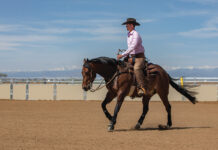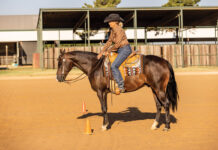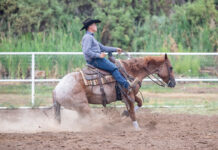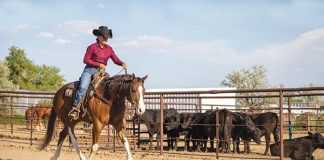Q: I was told to see-saw my horse’s bit when he lifts his head. He drops it, but then he lifts it up again. Why isn’t it working?
Instead of using the reins to punish your horse for lifting his head up, teach him to lower his head in response to rein pressure. It’s a slower and softer signal that’s more effective than see-sawing because it gives your horse time to reply correctly by adjusting his weight and posture in response to your cues.
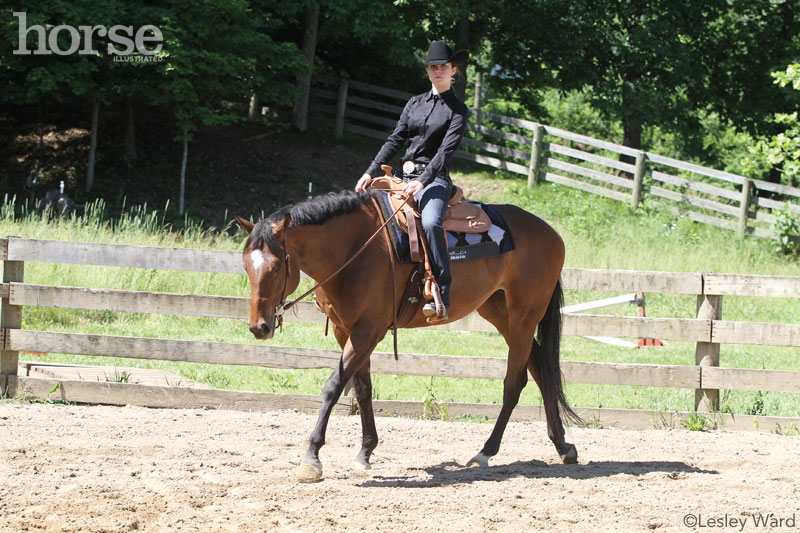
When he is traveling on his forehand, your horse elevates his head to counter the imbalance. See-sawing drops it, but doesn’t address the incorrect distribution of weight. Once your horse finds his balance, he will effortlessly and consistently carry his neck where you want it.
The first step is to teach your horse to accept gentle and supportive rein contact. Ride two-handed in an ergonomic snaffle (a curved or double-jointed mouthpiece that spreads pressure evenly and provides room for the tongue). Send your horse onto a small circle at the walk on a loose rein. Ask him to flex laterally at the poll by shortening your inside rein until he softens and lowers his neck.
If he responds by slowing down, he may have too much weight on his forehand or feel insecure. Send him forward with rhythmic leg pressure on both sides of his body to improve his balance and buoy his confidence. At the same time, pulse your inside rein in time with the landing of his inside forefoot to guide his neck into a lower more relaxed position. When his neck drops, release the pressure and praise him for a job well done.
Once he gets the idea of lowering his neck with the inside rein, add the outside rein. Teach your horse to lower his neck in response to even bit pressure by holding your hands at hip width, below your saddle horn, with your elbows slightly forward. If he lowers his neck, feed the reins through your fingers and offer him praise. If the additional rein creates tension and he elevates, maintain even rein contact while flexing his head slightly at the poll and pulsing the inside rein, waiting patiently while he figures it out.
Once your horse understands this concept at the walk, repeat these steps at the jog and then the lope to develop the consistent neck carriage you’re looking for.
This article originally appeared in the August 2015 issue of Horse Illustrated magazine. Click here to subscribe!

